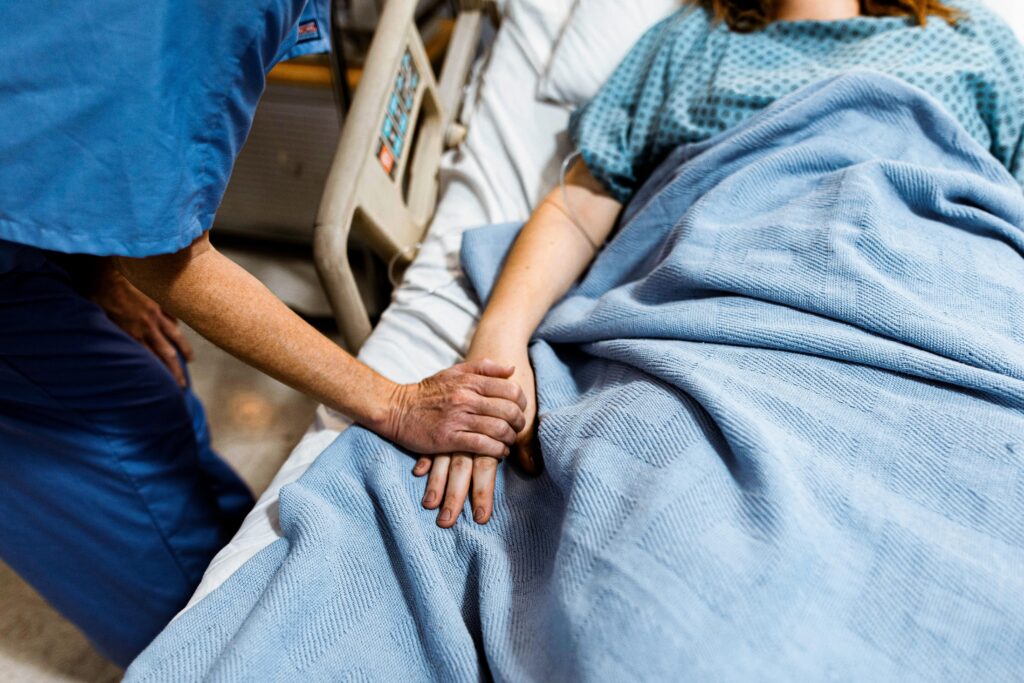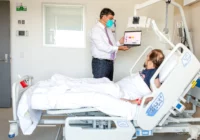Pressure injury continues to be a widely significant and growing health concern with a large financial and social burden on the Aged Care and Hospital sectors. Therefore, LenexaCARE – a data-driven approach to pressure injury prevention – has been developed to effectively address this problem.

Pressure Injury: A Massive Burden for Healthcare left unseen
Pressure injuries (PI), also referred to as pressure ulcers or bedsores, are among the most prevalent complications around the world. These painful, costly, and often preventable health concerns have been reported to be on the rise and pose a substantial risk to many individuals. According to Rodgers et al. (2020), the incidence of pressure injuries is alarmingly high, with a significant 12.9% incidence rate among Australian and New Zealand hospitals; and a noticeable 7.9% prevalence rate attributed to overnight hospital admissions; creating a massive burden for the Hospital and Aged Care sector.
Pressure injuries cause significant burden and reduce quality of life for both patients and their caregivers. Not only do pressure injuries lead to increased morbidity and mortality, they also cause personal burden including pain, discomfort, stress, anxiety, depression, as well as decreased autonomy, security, spiritual well-being, and social functioning.
Moreover, the financial burden of pressure injuries has become a hotly-discussed topic in the healthcare sector in recent years. Globally, a massive cost of over $200 billion is estimated annually on the treatment of pressure injuries, with $9 billion attributed to Australia alone. In hospitals, patients who develop pressure injuries face longer hospital stays, higher readmission rates, and greater healthcare costs, with an estimated additional cost of AUD$18,000 per pressure injury.
The impact of pressure injuries extends beyond direct medical expenses. Patients suffering from PI often experience a loss of independence leading to reduced productivity. For caregivers, managing pressure injuries can consume up to 25% of their time, while tasks like turning and manual handling contribute to over 50% of workplace injuries. This results in increased workplace insurance claims, absenteeism, and turnover rate in an industry that is already struggling for staff. Moreover, healthcare facilities also face potential litigation, penalties, and reputational damage if pressure injuries occur. Consequently costing the healthcare system billions of dollars every year on treating pressure injuries.
LenexaCARE: A Data-Driven Approach
Realising the detrimental impacts of pressure injury on people’s welfare and the healthcare system worldwide, Lenexa Medical has been at the forefront of developing an effective solution that leads with a data-driven approach. LenexaCARE provides a more streamlined, individualised, and cost-effective method. Equipped with smart sensors and AI-powered software, LenexaCARE automatically detects and records patients’ and residents’ on-bed positioning data continuously and accurately. This provides clinicians and carers with non-subjective information and fosters evidence-based decision making to ensure timely interventions, reducing pressure loading, thereby mitigating the risk of pressure injuries and helping to enhance quality of life for patients.
Additionally, powered with enhanced machine learning software and time series analysis, LenexaCARE deploys an automatic system that identifies patients and residents who have been exposed to a prolonged period of pressure. Therefore providing facilities with the information to enable targeted and proactive care to be delivered. Moreover, this model also generates objective metrics for risk stratification to identify the most at-risk patients and the areas that have been exposed to higher levels of risk of developing pressure injuries; thus allowing caregivers to tailor their repositioning schedules while maintaining individualised care for specific patients. As a result, healthcare facilities are able to maintain consistent and personalised care schedules, while avoiding ineffective turns to foster efficient care delivery and management. Ultimately, this new technology will help enable healthcare facilities globally to save billions of dollars annually through best-practice personalised pressure injury care.
Conclusion
A data-driven approach to preventing pressure injuries is essential for improving patient care, optimising resource use, ensuring compliance with standards, and fostering continuous improvement in healthcare practices. By leveraging technology like LenexaCARE, healthcare providers can significantly enhance the prevention and treatment of pressure injuries, leading to better patient outcomes and overall healthcare efficiency.
Learn more about the Data-driven LenexaCARE® solution to Pressure Injuries Today!
Reference
Avsar, P., Moore, Z., Patton, D., O’Connor, T., Budri, A. M., & Nuget, L. (2020). Repositioning for preventing pressure ulcers: a systematic review and meta-analysis. Journal of Wound Care, 29(9), 496–508. https://doi.org/10.12968/jowc.2020.29.9.496
Caponecchia, C., Coman, R. L., Gopaldasani, V., Mayland, E. C., & Campbell, L. (2020). Musculoskeletal disorders in aged care workers: a systematic review of contributing factors and interventions. International Journal of Nursing Studies, 110, 103715. https://doi.org/10.1016/j.ijnurstu.2020.103715
Nghiem, S., Campbell, J., Walker, R. M., Byrnes, J., & Chaboyer, W. (2022). Pressure injuries in Australian public hospitals: a cost of illness study. International Journal of Nursing Studies, 130(1), 104191. https://doi.org/10.1016/j.ijnurstu.2022.104191
Prevention and Treatment of Pressure Ulcers/Injuries: Clinical Practice Guideline. (2014). Internationalguideline.com. https://internationalguideline.com/Rodgers, K., Sim, J., & Clifton, R. (2020). Systematic review of pressure injury prevalence in Australian and New Zealand hospitals. Collegian, 28(3), 310–323. https://doi.org/10.1016/j.colegn.2020.08.012
